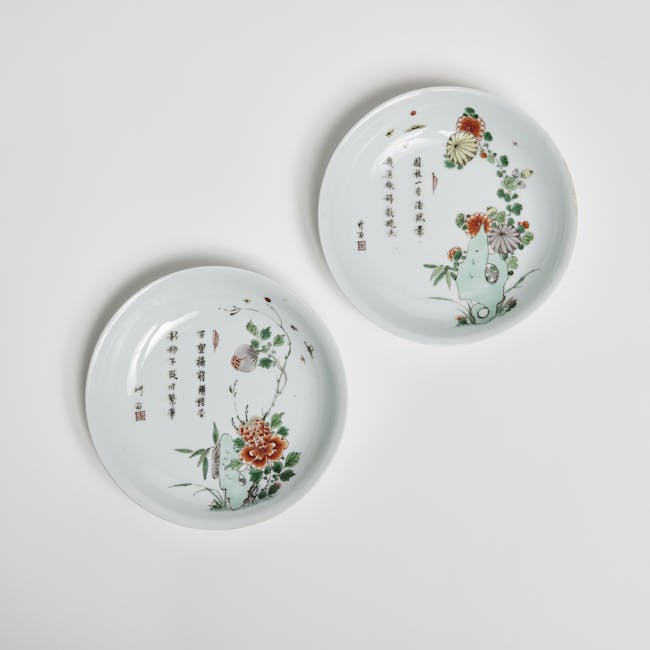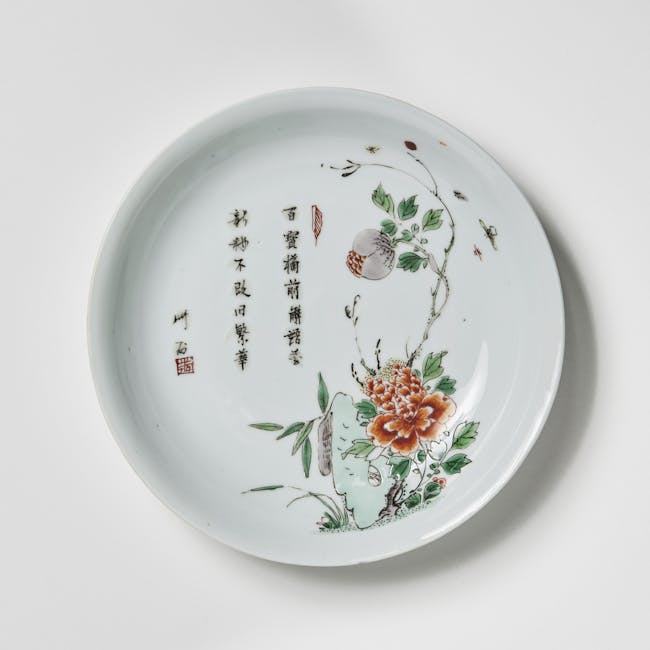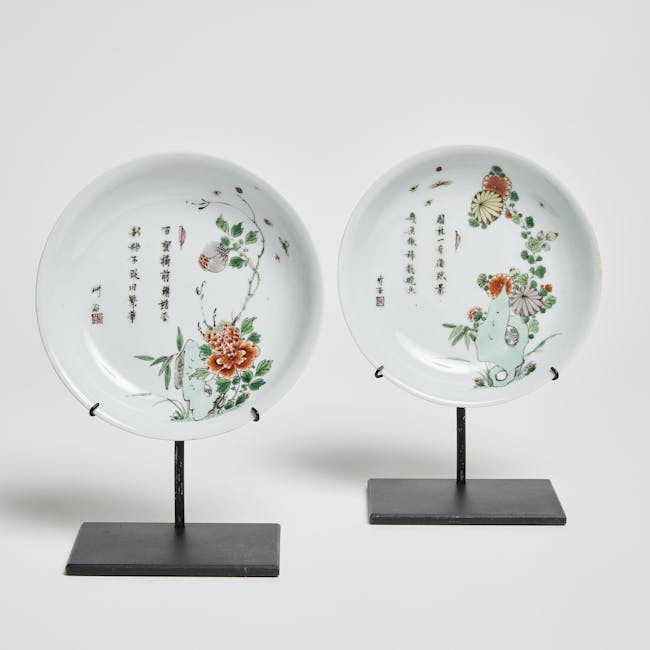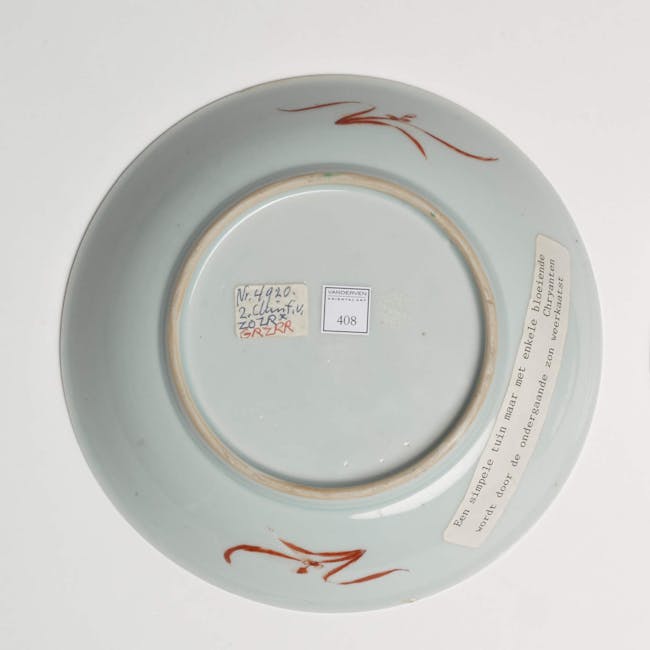A pair of famille verte plates, both decorated with flowers and a two line verse on a white ground. They are each decorated on the right-hand side with flowers and a rock; one with peonies and pomegranate, the other with chrysanthemums. Both have poetic inscriptions in black signed with a seal and a mug wort leaf in iron-red. The reverse is simply decorated under the rim with two red flower sprays. On the back are handwritten Morgpurgo inventory labels, with stock numbers and price code. Also two larger labels with the translation of the poems in Dutch, written with a typewriter.
The two-line inscriptions read vertically from right to left.
The plate with chrysanthemums is inscribed with:
The whole garden looks bleak (in late frosty autumn),
While the last few chrysanthemums give off a refreshing fragrance.
Bamboo Stone (name seal).
These lines appear to be from a four-line poem about the resilience of chrysanthemums blooming in late autumn from Stories to Awaken the World by Ming Dynasty poet Feng Menglong. The Chrysanthemum is the Chinese flower associated with autumn and the ninth lunar month, so the verse is an fitting accompaniment to the decoration.
The plate with peonies and pomegranate reads:
It’s (again) the blossom season beyond the exquisite terrace railing,
Where the new appearance cannot conceal the glorious past.
Bamboo Stone (name seal)
The peony is the Chinese flower of spring and the third lunar month, so this plate may be associated with spring. Perhaps these plates belonged to a whole series corresponding to the months of the year, each with its own flower and appropriate verse.
Fine bodied and colourful famille verte wares were fired twice. After shaping, they were glazed and high-fired. Then they would be decorated with bright enamels and re-fired at a lower temperature of 800 degrees Celsius in a so-called muffle kiln. In addition to the various vivid greens, the colour-set includes yellow, aubergine and a coral toned iron-red, black and blue. Gold is also applied, to further enhance the decoration.
Kunsthandel Jozef M. Morpurgo, was founded in Amsterdam in 1869 and run consecutively by four generations of the family until closing in 2018. They dealt in high quality antiques, glass and Oriental porcelains, and were one of the leading dealers in The Netherlands. Morpurgo was amongst the founders of one Europe’s earliest antiques fair in Delft in 1949, intended to renew the interest in antiques after the war.
There is a series of similar plates in the Porzellansammlung, Dresden, also including other plants such as bamboo and plum blossom (PO 6515 & PO 6517). The British Museum London has a pair of small plates with landscapes and poems (1947,0712.301.a-b), signed in a similar way in iron-red.






